Past Car Talk
Here are past updates of Car Talk articles. Instead of just changing the Car Talk section each month I would just save the past articles in another area. This way if you missed something, you could find it all in one place. Each Car Talk article is separated by a blue divider so you can skim through the list easily. Make sure to check out the GyrlSpeed Garage section coming in Spring/Summer 2024. Some of the info listed here may also be in the current or past videos!
_______________________________________________________________________________________________________________________________________
This Month's Car Talk is going to be about State and Emissions Inspections. I picked this topic because every month I see a lot of confused customers come thru the door not knowing why there are certain things you HAVE to keep up with on your vehicles. It's not just keeping gas in the car and making sure your registration and insurace is up to par. There's a ton more you should to do BEFORE it's time! Here we go...
Yearly State and Emissions Inspection: Pennsylvania
Every year in the state of Pennsylvania, specifically Philadelphia, you have to complete your State and/or Emissions Inspection at a certified/licensed Inspection Station. This inspection is an overall check to make sure that your car is up to date on certain safety and emissions guidelines. If you pass the Emissions part, you get one sticker. If you pass the State part, you get the second sticker. This is what those two stickers mean on your windshield. They are both good for one year...and then you get to do it all over again. Next I will go into what is checked for during the State inspection.
State Inspection:
Okay, the State or Safety Inspection is to check to make sure that the basics of your vehicle are in working order. Some of these things are checking to see if you have any exterior bulbs out such as headlights, tailights, turn signals, parking lights, etc. Checking that your wiper blades are not streaking and/or not clearing the windshield. Making sure your side mirrors are not broken or craked. Mainly, they are concerned with the glass. If the casing is a little damaged, you should be okay. If any of these minor things are NOT in working order you could FAIL the State part of your inspection. For example, if your turn signals are not working (even though most people don't use them in the first place), then the person behind you will not know you are turning and could possiblly cause an accident. This would be a minor safety concern. Some of the major things that could cause you to fail are damage to your suspension such as weak or damaged struts, broken control arms and springs). Brakes not being up to par such as the thickness of the pad is too low or your rotors have been worn down too low. Once of the most important saftey checks are for TIRES!!! The the tread too low or your tires are balding, they MUST be replaced. If you can't control, steer or stop your vehicle properly, then you will FAIL. You should want these things to be up to date on a daily basis anyway. If any of these things are brought up during the inspection then you MUST have them repaired of you will not receive your State Sticker.
Emissions Incpection:
Actually, I should have put this before State because this is what is checked first when you go in. Listen up people: If you have a Check Engine or Service Engine Soon Light on and go in for inspection, you wil automatically fail. There is a waiver that you can get if you spend a certain amount of money trying to fix the problem that will give you a pass until next year. But let's not get too deep into that. The Emissions portion is to check that you don't have an excessive amount of gasses coming out of your exhaust which in turn is harmful to the environment. This is usually when people find out that they need oxygen sensors and catalytic (NOT Cadillac) converters. There are other things that could be going on with the exhaust system but again, I won't go too deep into as it could go on...and on...and on...and, you get it. If you pass this part of the inspection then you will move onto the State.
Overall Maintenance:
Okay, by now I'm sure you're wondering why I'm talking about State and Emissions Inspections. I'm talking about it because that seems like the time when people think about car maintenance. By then it's too late because you HAVE to get certain things done or you will fail the inspection. And when you fail the inspection, you do not get two new stickers on your windshield. And when you do not have two new and CURRENT stickers on your winshield, officers like to stop you give you tickets...ask me how I know. Personally it took one time for me and that was it! Anywho, here are some things you should do on a regular basis that should almost eliminate you needing anything when it's time for and inspection. By the way, I just had my inspection done and I didn't need one, single thing!
Here's how you can do the same...or at least close to it:
Wiper Blades:
This one is pretty cut and dry. Check your wiper blades at least once a week. While you're filling up your gas tank, take a quick look at them. Make sure the rubber isn't hanging off them. Clean your windshield with them. Spray your washer fluid and see how well they clean your windshield. If they streak or shudder, replace them. And don't cheap out on these. Grab a set that should get you through the year...yes I said a set...that means TWO! Don't grab one at a time, why? Because do they work one at a time? NO! So grab two. Check that off of the list.
Exterior Bulbs:
Check your bulbs once a week as well. I know you cannot check your brake lights by yourself so you will need someone to check for you. But all your other bulbs, you can check yourself. Make sure your Low beams are working as well as your high beams. A lot of vehicles on the road use daytime running lights. Usually, these are just your high beams...so there's a dual function to them. Check parking lights as well as turn signals. A easy check is to throw on your Hazards or 4-ways and check them all at once. That was pretty easy...check.
Brakes:
Now unless you work on your own vehicle, you will need a professional to check these for you. About 3 months before your inspection, take your vehicle to a shop and get your brake system checked. If your brake pads are too low, have them replaced. Usually, the mechanic will resurface your rotors. This should always be done when replacing brake pads unless you are getting new rotors. The rotors should be resurfaced so that they are nice and smooth with the new brake pads. Most people don't think about this as they are usually just concerned with the brake pads. Just imagine trying to walk on an uneven surface...you can still walk but not that well...same thing here. I feel like 3 months is a good amount of time in case you need a few things done and may not have expected that bill. During your inspection, you don't want to be forced to get it done. Another check.
Tires:
Tires, tires, tires. I could talk all day about tires but I'm going to make this short and sweet. Check your tires every couple of days. The cold and heat can show the true condition of your tires. When it's cold, you may lose a little air pressure in your tires. If this happens every day or every few days, I would have them checked. Point blank, you can't see what's going on inside your tires and a lot of time, that's where the problem can start. Same difference for when it's warm. Heat makes rubber expand and if your tires are already on their last leg, they can turn into a nightmare. So yes, check your tires every couple of days to see if there's anything in them or if they are starting to look work or frayed. If you see that they are starting to split or you see wires...get to your nearest tire shop and have them checked for replacement. Check!
Check Engine Light:
Now this one is a little more difficult because you need, at the very least, a hand held scan tool. Depending on what type of scan tool you get will results in what type of results you get. Actually, the explaination of results you get would be a better way to say it. If you are not familiar with reading codes or at least what they mean, this is probably best left to the professionals. I say this because sometimes the readout is NOT self explantory. Sometimes, you can get lucky and get a readout that says p0304, cylinder 4 misfire whiche you may be able to fix by changing spark plug number 4. Then, you may get yourself a Saturn S-Series and get a misfire code which could also mean that you need an intake manifold gasket or better yet, an intake manifold...Huh? This is oh so true...ask me how I know.
The Bottom Line:
Don't wait until the last minute when it comes to car mainetenance! This could not only set you back on keeping your car up to par, it could also cause you a major headache when it comes to getting your vehicle inspected and having no choice but to get those repairs done that you had all year to do. And now that you know what to do, go check those wipers and those bulbs!
Have a horror story about getting your car inspected. Email me HERE with the Subject: Inspection Horror Story and you may just see them in a Car Talk Update!
_______________________________________________________________________________________________________________________________________
This Month's Car Talk is going to be about oil...yes I said oil. You can never really talk about oil too much because it's basically the lifeline of your ride. As I have said before, it's just as important as blood is to your body. Now, with that aside, I'm going to make this Car Talk just a little different. I'm basically going to give my account on why it's good to experiment with different oil brands and see what works best for you and your ride.
My Oil History:
Long, long time ago when I used to take my car to a service center and let them change my oil, I didn't really care about what oil was being used. Just the fact that I changed my oil in a timely manner was all that I was worried about. Fast forward to when I was just becoming interested in working on my own car. I started getting Castrol Synthetic Blend because I wasn't sure if I wanted to go full synthetic. Used that for a while and even switched to 10w-30 for some reason...oh, I know the reason, people were telling me I should switch to a heavier oil when it got cold. Did that for a while and didn't really see any noticeable difference as far as oil not burning as fast and "lasting" longer. For my engine, the recommended weight is 5w-30 and with no major engine problems, I didn't really see the point in it. Anywho, I let that idea go and basically stayed with 5w-30 ever since.
Oil Brand History:
Alrighty, after I got past the whole which weight to use thing, next came which brand to use. I basically stayed with the popular brands: Castrol, Pennzoil, etc. I used Castrol Synthetic Blend until the main store that I was getting it from didn't really carry it anymore. Sooooo, I made the switch to full synthetic and began using Pennzoil Platinum. I had been using Pennzoil for at least the last 3 years and during that time I would always have to top off my oil about mid way through my oil change time which was about a month and a half. (Personally, I don't use the 3,000 mile period because if I did, I would only change my oil twice a year.) And it wouldn't just be a quart, it was like 2 and a half to 3 quarts. Now, I'm sure you're thinking, I must have had some type of oil leak...NONE WHATSOEVER. Each time I did my oil change, I followed the proper procedure: change the gasket on the oil drain plug, hand tighten the filter, add oil and check for leaks from filter and drain plug...no leaks. But I was burning oil like crazy. Having been a member of a few different Saturn Forums, I checked there and quickly noticed that Saturns like to burn oil as they get older, some more than others. I kinda chalked it up to that and just made sure to keep enough oil in the engine like I'm supposed to. I even switched to Pennzoil Ultra for one oil change by the suggestion of a friend and couldn't take it. That oil was just too "purified" for me and I could smell it ALL the time...so back to Platinum. Finally, I got tired of just the whole Saturns burn oil thing and took the plunge and decided to change my oil brand. After some checking around, I went with Mobile Super Synthetic 5w-30. I didn't go with Mobile 1 because I thought about that "purified" smell that I got with the Ultra and just wanted to see if there would be any difference before I paid $60 bucks doing an oil change. Well, well, well my friends! All I can say is that the change was like night and day...
Immediate Results:
Immediately, the engine smoothed out. Some may say that I needed an oil change which is why it wasn't smooth to begin with. To that I say that I do my own oil changes at the proper intervals, I only go to Sunoco for gas and use premium (89) and use a fuel treatment every 3 months as well and everything else is pretty much sound with my vehicle. Next, it feels and sounds smoother as well. While I cannot say that HP was increased just by changing the oil, I will say that it performs better. By better I mean just an overall smoothness that had not been there in a long time. I'm sure 1,000,000 people will try and tell me that it wasn't the oil and something else was going on but when you know your ride inside and out, you notice the difference in everything. Hell, I can tell when driving when my tire pressure is a little off in one tire...yes, I can feel the difference in the ride. (We'll get into that another time).
My Conclusion:
So what's the end result? Well, the main thing that really has me sold is that I NEVER had to top my oil off at all during this oil change interval. Each time I checked, I was surprised that the oil level was right on and the rest of the last quart that I kept in the trunk went unused. That alone told me that oil makes a difference and that not all oils are created the same. Another thing is that the oil was not as dark as it had been previously during ALL the other oil changes. I was almost used to it being that dark on a regular basis. To add to that, some may say I was using an inferior oil filter. I had used FRAM, Bosch and even a store brand premium filter before finally switching to and styaing with K&N which I have been using for the last few years. All in all, the main thing you should do for YOUR ride is to see what works best for YOUR ride. If something isn't working the way you want it to or think it should, try something else. If it doesn't work, try something else again, or go back to what you started with. No one knows your car better than you and in the end, if you get the result you're looking for then that's all that matters!
P.S.:
I will update this article as I complete the next few oil changes so that this will not be considered some kind of fluke or one-off...
P.S.S:
Completed second oil change using the Mobil Super Synthetic Oil and K&N Oil filter and still happy with results.
P.S.S.S:
Completed my third oil change using the Mobil Super Synthetic Oil and K&N Oil filter and still happy with results. Also, I have noticed that Pennzoil has changed the formula or at least the way they refine the Synthetic oil...it was much needed and I know not because of me but still not sure if I'd actually uses it again.
P.S.S.S.S.S......:
Pretty much I have proved this point to myself. Still happy with Mobil Super Synthetic Oil and K&N Oil filter. It would take a lot for me to switch up this combination!
_______________________________________________________________________________________________________________________________________
Now that Summer is here, it's time to focus on what's going on with your car and what needs to be done. Before you do that, you need to know ABOUT your car first. What year is your car, what size tires are on there? Do you know what kind of oil your ride takes? When was the last time you had your belts changed? If you think I mean belts that go around your waist, you're in more trouble than I thought. There are belts underneath your hood. They go around pulleys that run things like your power steering... I'm getting way ahead of myself. So let's keep it simple right? Right. Alright, let's get started with some of the things you NEED to know BEFORE you walk yourself into a repair shop or an auto parts store. Just in case I miss something that you think should be on this list, email me HERE with what I missed and I might add it later but don't get your hopes up!
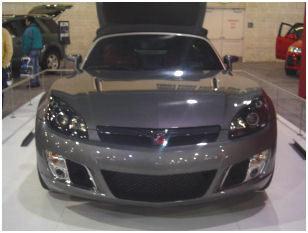


What kind of car do you drive? What's the Year, Make and Model? Now most of us know what year our ride is. Then most of us know what kind of car we drive (thank God), but what model is it? Just knowing that it's a Saturn, Nissan or a Honda isn't enough. There can be HUGE differences within the models. Believe it or not there are tons of differences that you may not notice that makes all the difference in what parts you may need or want for your ride. To keep it simple, say you wanted some door trim for your ride and it's a four door, you wouldn't get the same trim for your two door. Oh, and just to add to this, a Sedan had 4 doors and a coupe has 2. I'm sure you know this but in case there is someone that you know that doesn't, help a sister out and tell her. So now that we know what year the car is, the make and model, I'm going to throw a wrench in it...what's the engine size? HA! You don't know do you? But that's alright, we can find that out easliy as well. Go outside(after you read this, or now if you're on your phone, tablet or laptop) and open up the hood. Look on the top of the engine (the biggest thing under the hood) and look for some numbers and letters. Do you see anything that says 2.2L DOHC or 1.9L EFI-OHC? If you see anything similar to that then that's what size engine your baby has? If it is not there, look on the driver's side door and look at that placard or manufacture's plate. There may also be a placard under the hood to tell you as well. This is absolutely necessary to know these numbers and letters...memorize them or keep them as a note in your smartphone. That's how you will really get what parts you need from the parts store or can 'verify' when you've had work done at the repair shop. Now I'm not going to get totally deep into that because it can get waaayy out of hand. So for now, keep all those things in mind and you'll be a step ahead of the average girl.
_____________________________________________________________________________________________________________________
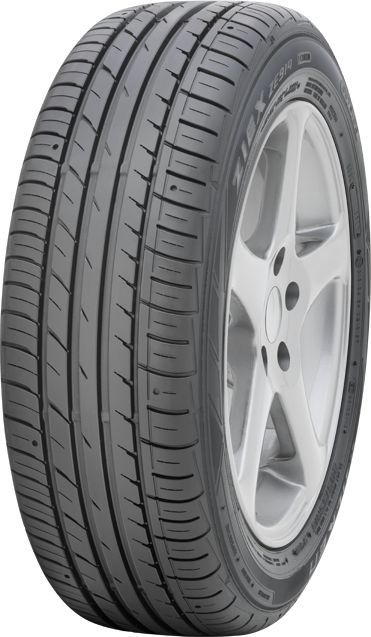
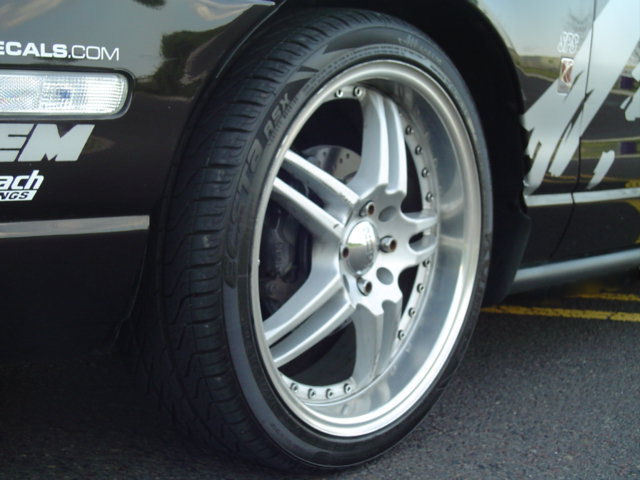
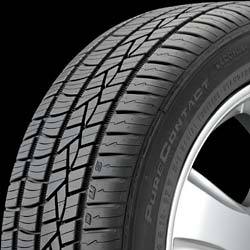
What size tires do you have? Okay, saying whatever is on there is not a good answer. You'll get taken every time with this one. Unless you have aftermarket wheels on or your car came standard with a performance styled tire, you don't need to really go overboard. Once again, go outside and look at your tires. You will see a group of numbers on the side of the tire. Let's use my current size: 205/40/17. No, it's not a combination, it's telling you just about everything you need to know. Let's start with 205. This is telling you how wide your tire is. You can measure this by going left to right, or if you stand on the side of your car next to the tire like you're in the driver's seat and measure the tire from left to right, that's how you come up with that number. The larger this number gets, the wider your tire gets as well. Next is 40. This is telling you how tall your tire is. The higher this number, the more meat your tire has, the lower, the thinner your tire is. To measure, just go from the edge of the wheel to the top of the tire. Lastly is 17. This is the size of your wheels. It is basically the diameter of the wheel. Measure from one side of the wheel to the other and there you go. You would not measure the tire, just the wheel/rim itself. Was that so hard? Now you know almost everything about your tires. Here's one more thing. Always get All Season Tires...especially if you live in an environment where the weather varies. There are other tires you can get but we want to keep this simple. Now you know what tires to get, what's next?
____________________________________________________________________________________________________________________________________



Which headlights bulbs do you need? What bulbs do you need in general? Yes, I said which because most cars run a high AND low beam. (PLEASE tell me you knew this). I say most because some actaully run off of the same bulb, either way you need to know that number. To be honest, you will probably find out which bulbs you need when you need them replaced. When this happens, find out the numbers and keep this info in your brain or on your smartphone. OR you can just keep the empty package in the trunk. Write on the back where they go like tail light, rear turn signal, etc. This will make for short trips to the auto parts store because you won't have to wait for the slow salesperson to look your car up or play with those dumb machines that aren't working half of the time anyways. Now if you take the bulbs out yourself, most of the time you can just look at the bottom or on the edge and it should tell you the number you need, i.e. 3157 or 3057LL or 4157NA uh oh, I scared everyone away again. Come on back. Those letters at the end of the numbers mean different things but I'm going to expalin really quickly. The 'LL' just means Long Life, like they'll last longer but the 'NA' means that the bulb is amber or orange in color. These are mainly for turn signals and some sidemarker bulbs. That wasn't scary at all! But I think this last thing will scare you, lol. When your headlights come on, do they get progressively brighter? Do they look more blue/purple than most? Ahhh, if so, then you have yourself a set of HIDs. HID means High Intesity Discharge. If you want a science class, you'll have to sign up for one but for right now they are brighter and lasts much longer than 'standard' headlight bulbs. These are not only more expensive but a lot of parts places may have to order them for you. This should not be a problem and should only be like a one day turnaround. You may or may not want to get them from the dealer but either way, you're going to pay. Enough about these dang bulbs...
____________________________________________________________________________________________________________________________________
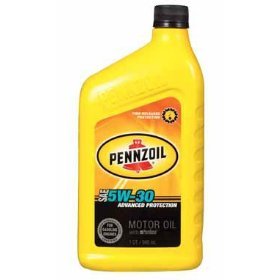
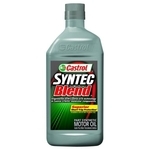

What oil are you currently using? And if you think I mean cooking oil slowly move away from the computer AND your car! If you do know what I'm talking about, at least a little, we can move on. Oil is basically like blood. Your engine needs it to survive. Too much and it will flood the engine and underhood area. Not enough and your engine will croak. Put the tissues down, you can save your baby and never get to those points. Secondly, it's very easy to find this out before you leave the house. You can look under the hood and there will be a oil symbol where you put the oil in at. A lot of newer cars or cars from at least 1998 on will actually tell you on the oil cap. If your ride is a little older you can check the owner's manual. Don't have a manual, then call the dealership. Why? Let's see because they deal with your car every day, duh. Calling a dealer is the best way for those of you who have luxury cars. Why? Because parts places sometimes list you can use regular oil when you need sythetic....Ahhhh, I'll touch on synthetic oil in a sec. If by chance you can't do any of this and you're out and about and just need a quart or two, then I guess it's okay to go into a parts store and have them look it up for you. Just make sure to keep an extra bottle in the trunk. That way, you'll have extra on hand 'just in case' and you'll always know what you need. Now, oil can get very complicated if you let it and I won't, so here's the basics. Standard, Synthetic Blend and Fully Synthetic. Standard is exactly what it sounds like and there's nothing special about it. It has the basic necessities in it that your engine needs. The difference between one standard oil over the other is that one company may refine it a certain way. For example coffee. Eventhough it's all coffee, you may like one brand over the other...same here except that you won't drink oil. Next is Synthetic Blend. This oil is a blend of standard oil and synthetic oils. Basically the synthetic oils will perform better at higher temps and coat engine parts better than standard. Lastly is Fully Syntetic. If you just read what I wrote, then you will quickly understand that fully synthetic oil is just that. It is an all synthetic oil, oil. Now I could get into weights (not working out!) and use words like viscosity but I don't want to cause any more heart attacks than I already have.
____________________________________________________________________________________________________________________________________

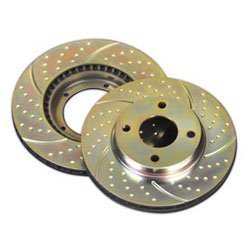
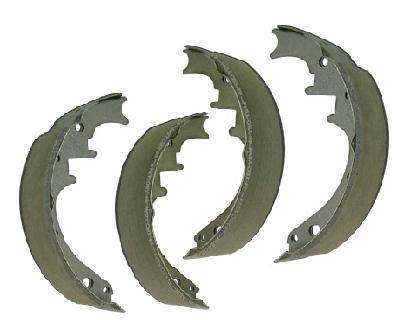
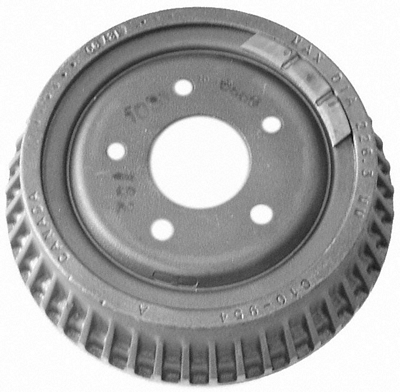
What type of Brakes do you have? We're going to keep this simple as well. First, let me tell you that you have disc brakes up front. This means that to stop, there are 2 pads that clamp down onto a disc when you put your foot on the brake...this is the same on both the front wheels. Those discs are called rotors and they are called disc brakes because of that. The main thing is do you have discs in the rear or shoes. If you have disc brakes all around, it means that you have this set-up in the front AND the back. Not everyone has this set-up and you will need to know if you have disc brakes in the rear or brake shoes when it's time to replace them. Again, you will probably not realize this until they need to be changed and when you find out, remember between the two. Point blank, brake shoes look totally different. For one, if you can see through your wheel, you will see how. Discs are flat and round. Drums, which cover the shoes look similar to microwave covers...that's the best way to explain how they look. Behind these drums are the brake shoes. These shoes spread out towards the drums in order to stop. These don't need to be replaced as much as brake pads as most of the stopping power is coming from the front. Instead of trying to describe everything, check out the pictures above. The first pic is of brake pads and the second is brake shoes. The third pic of of rotors and the last pic is of drums. If you have upgraded wheels that came on your ride or changed them afterwards, you'll be able to check them easily. Now wasn't that easy?
These are just some of the basics that you need to know but they will help you a long ways down the road. There are some other things that I could go into but I won't right now. Let these points simmer for a little while and get more familiar with them. As you do this, you will feel for comfortable talking about and taking care of your ride. Who knows, you may try and do some of these things yourself when it's time to replace them. Stop shaking your head no, it's more like you never know ;)
_______________________________________________________________________________________________________________________________________

